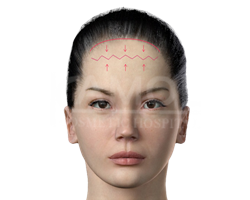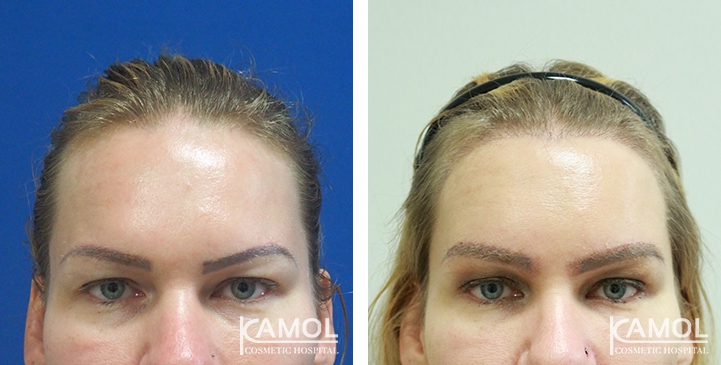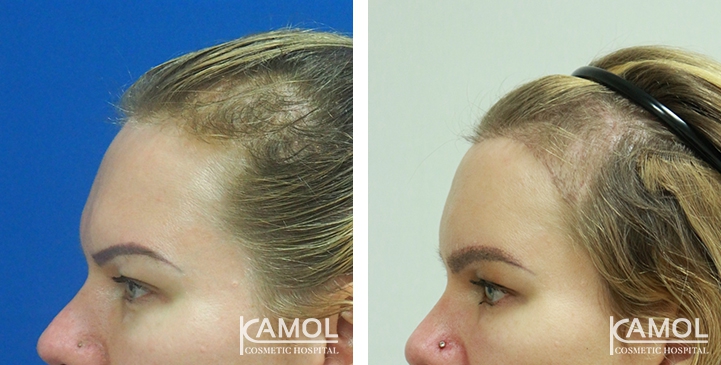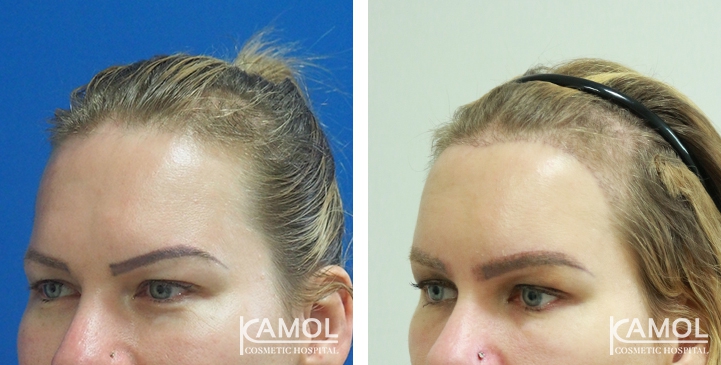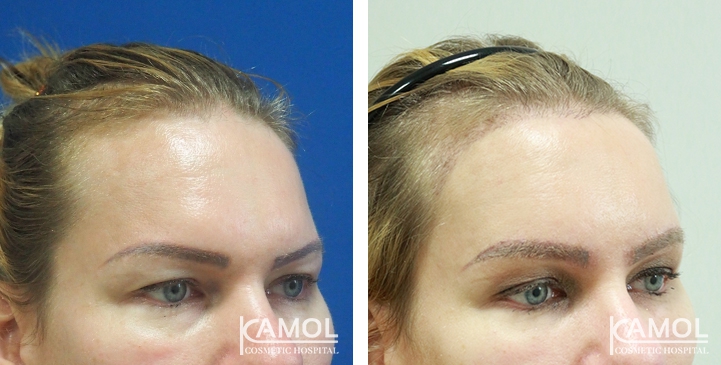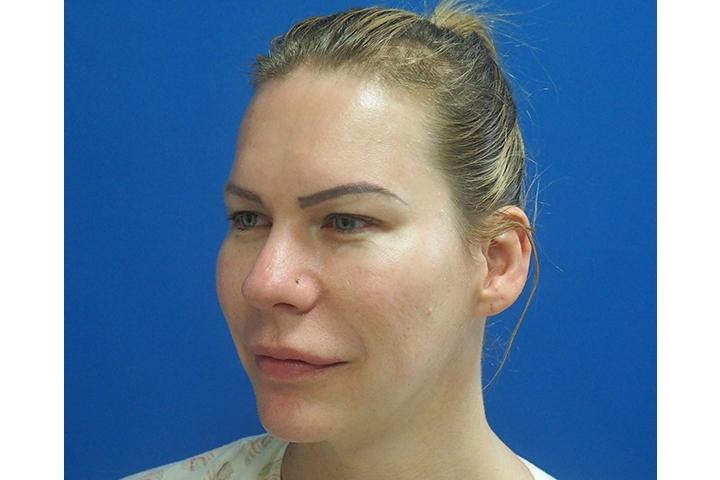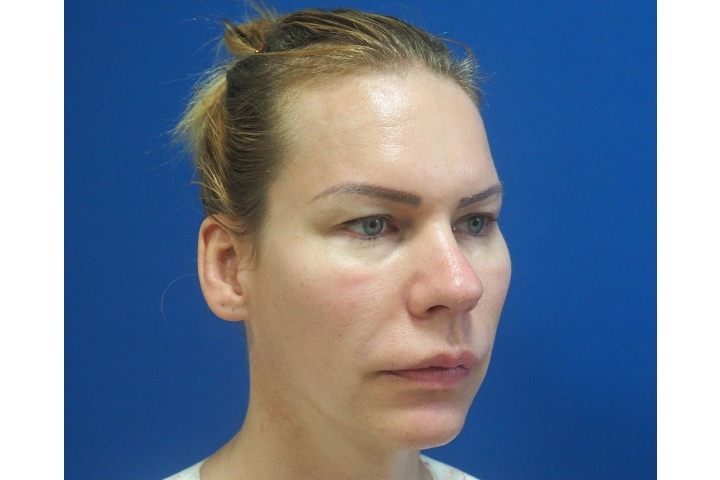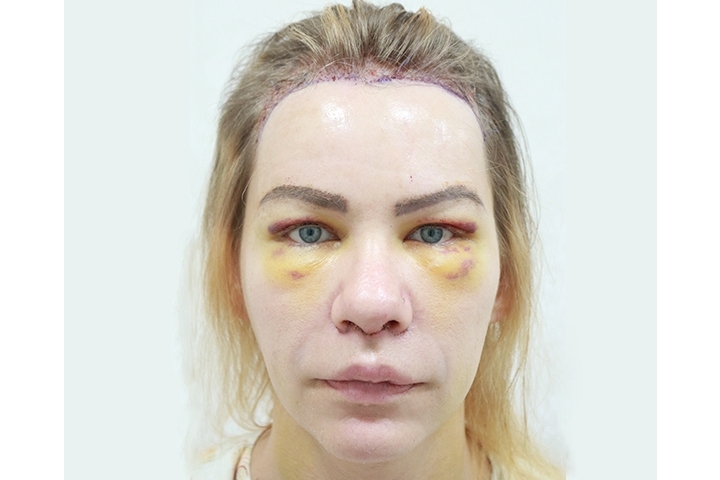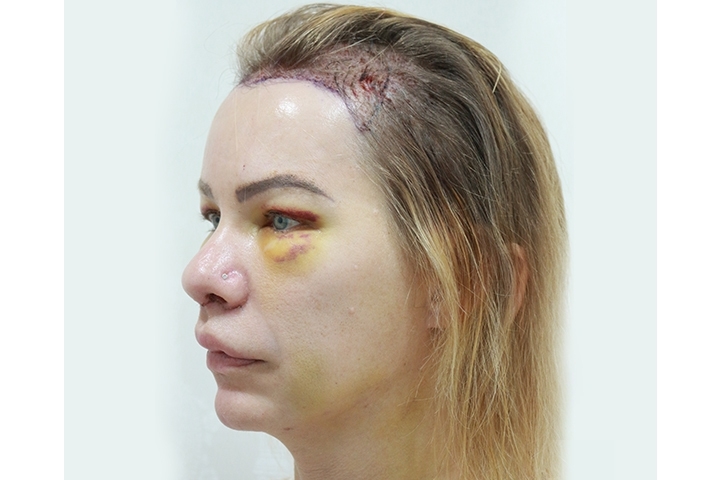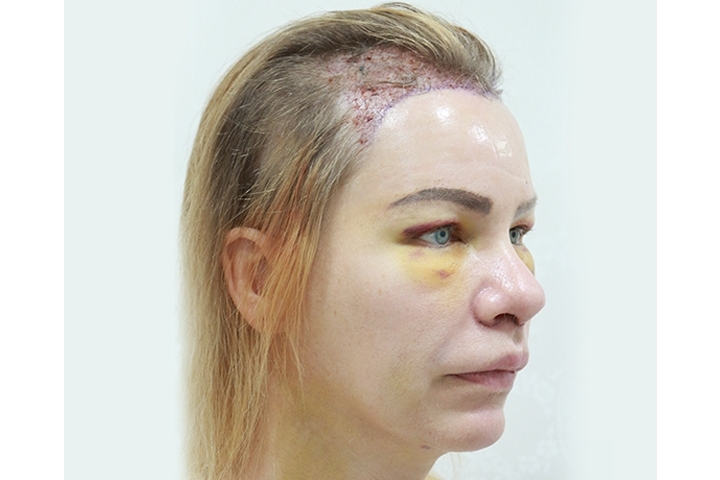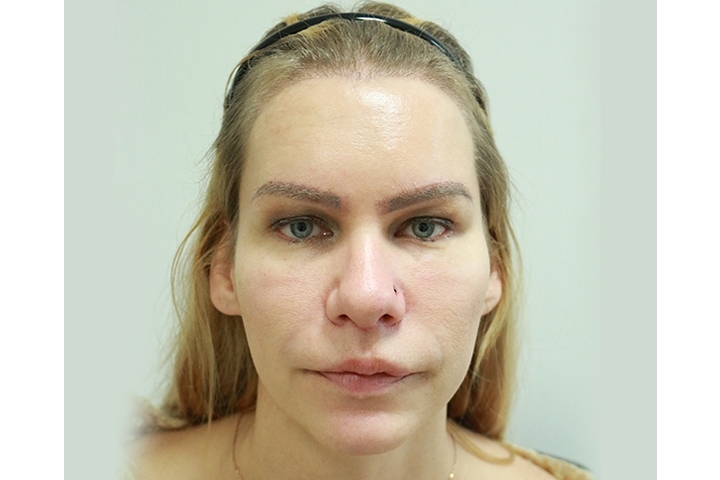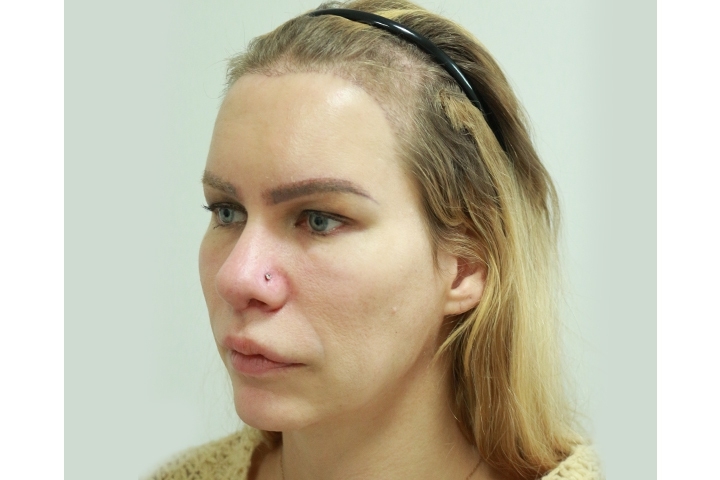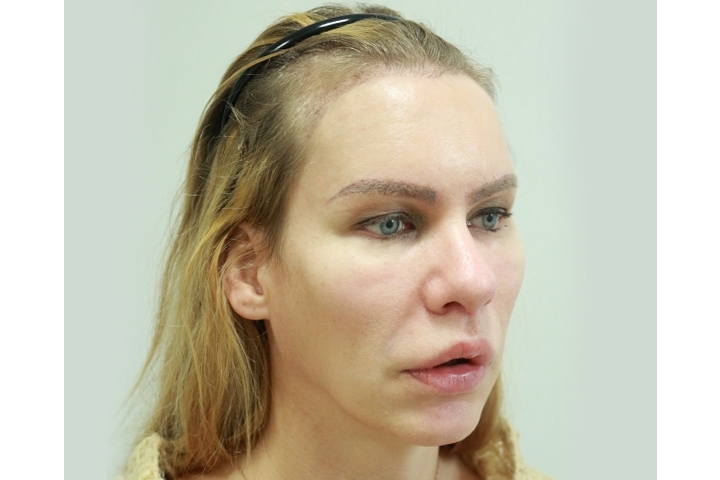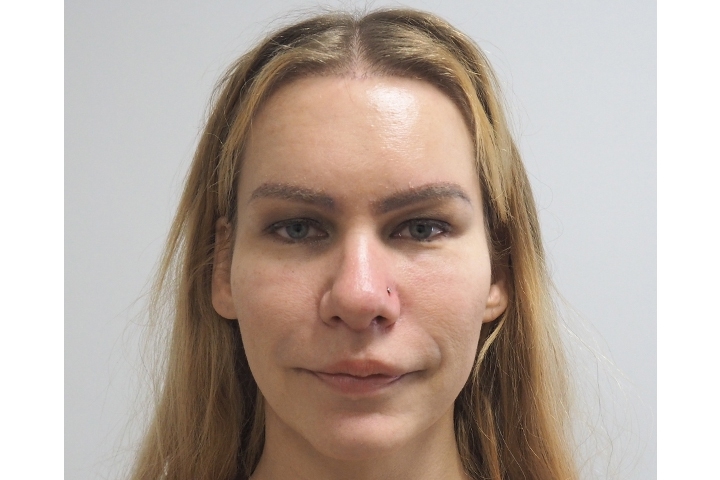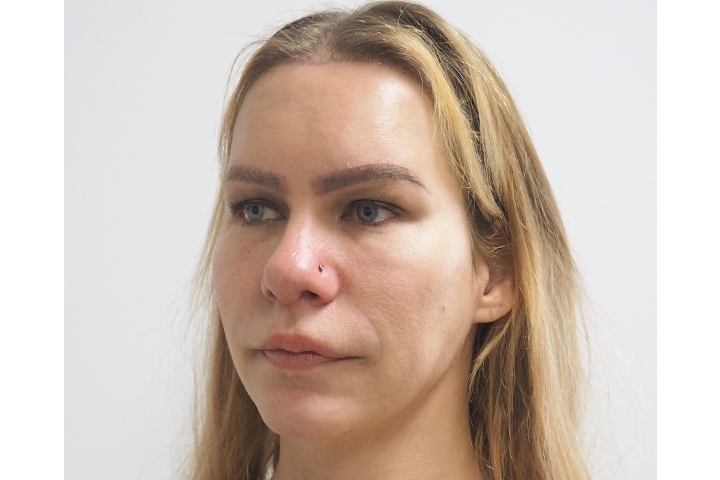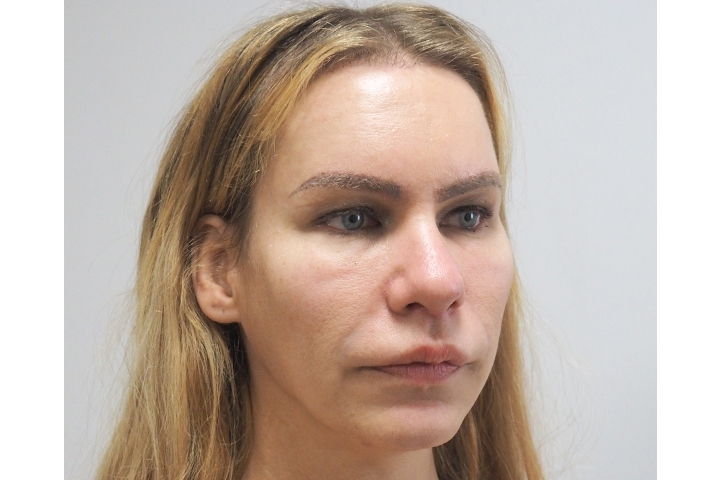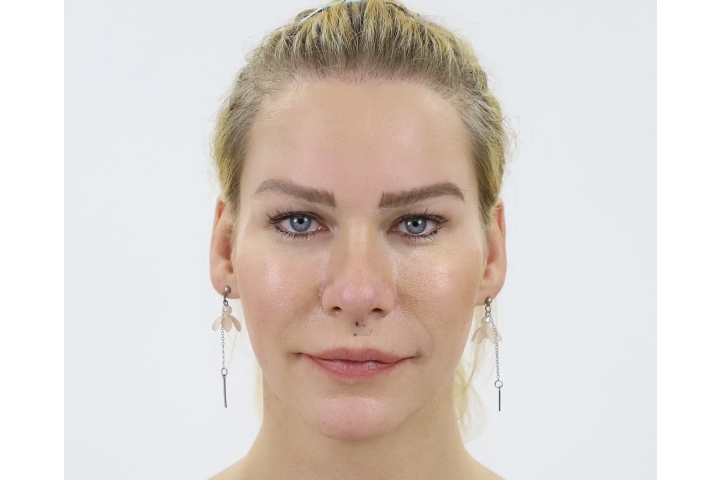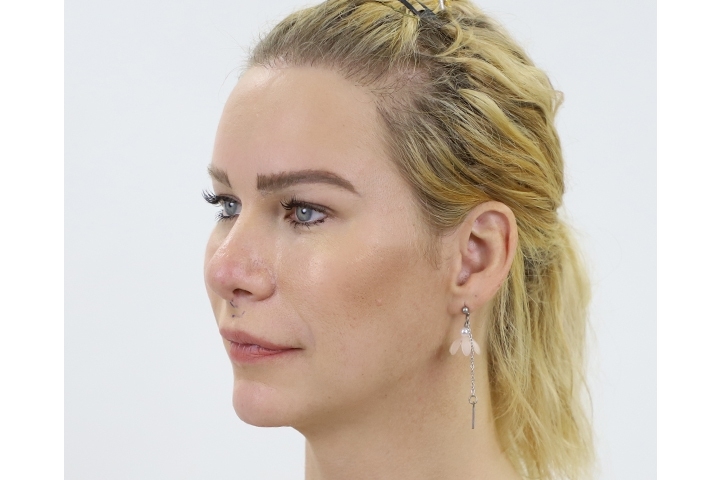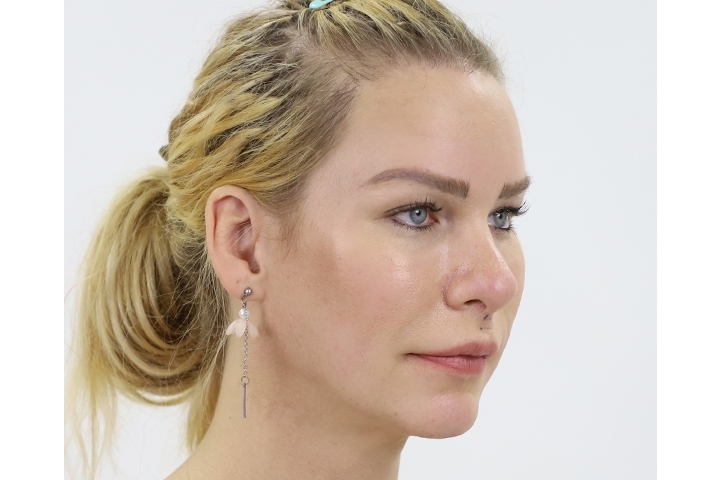Hairline Lowering Surgery / Scalp Advancement in Bangkok, Thailand
The broad forehead is often an undesirable trait that causes a feeling of self-consciousness and dissatisfaction. One of the correcting techniques that we offer is a hairline lowering or forehead reduction procedure. This procedure can reduce the look of a wide forehead, restoring balance and improve overall facial symmetry.
A Good Candidate for Hairline lowering
- Man or woman with a naturally high hairline, receding hairline unhappy with their forehead
- A broad forehead and wants to shorten the forehead
- Low or heavy eyebrows and want to change the proportion of your face
- Healthy
- Realistic expectation
- Know the risks of the procedure well
Preparation for hairline lowering
- Consult with a plastic surgeon who is highly skilled and experienced in hairline lowering. You will discuss your surgical goals, medical condition, and treatments
- Physical examination, including a blood test, chest X-ray, electrolytes level, HIV
- Stop smoking and drinking alcohol at least one week before surgery
- Avoid taking aspirin, anti-inflammatory drugs, and herbal supplements as they can increase bleeding and bruising for at least two weeks
- Stop eating and drinking at least 6 hours before surgery
|
Figure 1: Shows the hairline lowering incision |
Figure 2: Shows the hairline lowering scar |
Hairline Lowering Procedure:
- Hairline lowering is an operation performed under general anesthesia
- An incision is made at the hairline and extends into the temporal area within the hair-bearing region. The scalp advances through this incision, The excess forehead skin is then removed, and the hairline is placed in a new lowered position. In most cases, the hairline can be reduced by about 1/2 to 1 inch in a single procedure
- The skin is sutured together in a way that minimizes scar formation and is hidden almost entirely by the hairline upon hair regrowth
The operation time is around 2 hours.
Post-operative care for Hairline Lowering
- Stitches remove in one week
- Keep the head elevated for 1-2 weeks after surgery to reduce post-op swelling
- To control pain and swelling in your face with medication
- Most patients can wash their hair the next day and go back to work a few days after the operation
- In some cases, a follow-up hair transplant recommends lowering the hairline further and covering the hairline scar
- Follow all post-operative instructions and attend all post-operative appointments
Risks and Complications for Hairline Lowering:
- Scarring after the incision heals
- Bleeding
- Infection
- Adverse reaction to anesthesia
- Suture rupture along an incision line
- Hematoma
- Dissatisfaction with appearance after surgery
- Facial nerve injury
- Hair loss around incision scar
If an experienced, skilled professional performs the surgery, the risk of a visible scar and long-term effects is a minimum.
The result of Hairline Lowering
Hairline lowering will pull down hairline around 1.5-2 centimeters. Make your forehead more narrow 1.5-2 cm. Your face will be more balanced with Hairline lowering and Hair transplant.
If you have a broad forehead that prefers to reduce much more than 3 cm, you cannot perform only hairline lowering. Another alternative procedure might be hair transplantation. Kamol Cosmetic Hospital offers a combination of hairline lowering and hair transplants.
The limitation of hairline lowering is as follows:
- The maximum of pull-down is approximately 2 cm. Maybe not enough for some patients' needs
- Hairline lowering surgery will have a scar on the edge of the hairline
- Some people with dark skin are more noticeable shedding color on incision scar
- Hairline lowering cannot create a beautiful facial frame
The limitation of hair transplant is as follows:
- It may take a year to see the complete result
- The operation time of a hair transplant takes many hours on local anesthesia, and they will feel uncomfortable during the operation
- The number of hair grafts is not more than 4,000 grafts each time. It can reduce the forehead width by around 1.5-2 cm, depending on the hair graft density
The advantage of the combination of hairline lowering and the hair transplant is as follows:
- The combination of hairline lowering and hair transplant can help with the limitation of each technique as well. This combination surgery will reduce the forehead width successfully by much more than 3.5 cm.
- Sometimes, the hairline lowering cannot be pulled down to cover the bald side
- A hair transplant will full fill the hairless area
- A hair transplant can design the facial frame to be a feminine or masculine hairline. Make your face more natural look
Getting to Know for Hairline Lowering Surgery / Scalp Advancement / Forehead Reduction
Why is Hairline a major part in a Feminine face?
The hairline is a major part of the facial structure and plays a key role in determining the facial appearance.
Why people need Hairline Lowering?
Hairline lowering is a surgical procedure that involves moving the hairline downward and and reducing
Feminine Hairline makes perfect to FFS
A feminine hairline is typically characterized by a rounded or curved shape, with a higher forehead and less..
Before & After for Hairline Lowering Surgery / Scalp Advancement / Forehead Reduction
Reviews for Hairline Lowering Surgery / Scalp Advancement / Forehead Reduction
Video : Hairline Lowering Surgery / Scalp Advancement / Forehead Reduction
Why both Hairline Lowering and Hair Transplantation Procedures are needed for some people?
Hairline lowering, also known as forehead reduction or hairline advancement, is a surgical procedure that is performed to lower the hairline by removing a strip of skin from the forehead. This procedure is typically done in conjunction with a hair transplant to create a natural-looking hairline and to fill in any bald or thinning areas.
Some people may require hairline lowering in addition to a hair transplant due to a high forehead or a naturally high hairline that they wish to lower for cosmetic reasons. In some cases, individuals may have had previous hair loss or balding that resulted in a receding hairline, and they want to restore a more youthful and natural hairline. Additionally, some people may have had a previous hair transplant procedure that did not achieve the desired results, and so they opt for hairline lowering to correct any issues and achieve a more satisfactory outcome.
What are the reasons for undergoing a Hairline Lowering Surgery?
Some of the common reasons why people may choose to undergo hairline-lowering surgery include:
- Aesthetics: A high hairline can be considered unattractive and can be a source of self-consciousness for some people. Lowering the hairline can create a more balanced and aesthetically pleasing appearance.
- Genetics: Some people are born with a high hairline that is considered to be genetic. Hairline-lowering surgery can help to correct this condition.
- Previous surgical mistakes: In some cases, a high hairline may be the result of a previous hair transplant or other surgical procedure. Hairline-lowering surgery can be used to correct the problem and create a more natural-looking hairline.
- High forehead: A high forehead can make the face appear disproportionate. Hairline-lowering surgery can reduce the size of the forehead and create a more balanced appearance.
- Correction of a receded hairline: A receded hairline can be corrected with hair transplant surgery and hairline lowering can give a more natural look to the transplanted hair.
It's important to note that hairline-lowering surgery is a serious procedure and should not be considered lightly. It is important to have realistic expectations about the results of the surgery and to consult with a qualified surgeon who has experience in this type of procedure.
What are the techniques used in Hairline Lowering Surgery? And what are they for Hair Transplant Surgery?
Hairline-lowering surgery is performed using one of two main techniques:
- The Coronal Incision technique - In this method, a strip of skin is removed from the forehead, and the hair-bearing scalp is moved forward to fill the gap. This technique is best suited for people who have a high forehead or a receding hairline.
- The Trichophytic Forehead Lift technique - This method is similar to the coronal incision technique, but the incision is made at the hairline, rather than on the forehead. This technique is less invasive and allows for a more natural-looking hairline.
In Hair transplant surgery, there are two main techniques:
- Follicular Unit Transplantation (FUT) - In this method, a strip of skin is removed from the back of the head (the donor area) and the individual hair follicles are harvested and transplanted to the balding or thinning areas (the recipient area).
- Follicular Unit Extraction (FUE) - This method involves removing individual hair follicles from the donor area using a specialized tool and transplanting them to the recipient area. This method is less invasive and allows for faster healing, but it is also more time-consuming and can be more expensive.
Both techniques are performed under local anesthesia, and with the help of a team of surgeon and nurses, the procedure is done. Both techniques have their advantages and disadvantages, and the choice of technique will depend on the individual's specific needs and goals.
Frequently Asked Questions
A: Hairline lowering surgery, also referred to as forehead reduction or scalp advancement, is a cosmetic surgical procedure that can reshape your hairline, creating a more balanced and aesthetically pleasing facial appearance.
This process involves removing a small strip of skin from the forehead and advancing the scalp forward to lower the hairline. This can be particularly beneficial for individuals who feel their forehead is too high or disproportionate to their other facial features and feel self-conscious about their appearance.
A: The most suitable candidates for this procedure typically include:
- Individuals who have a high or broad forehead and desire a more balanced facial appearance.
- Those with a mature hairline that has receded significantly due to aging or genetics.
- People who have good scalp laxity, thus allowing for adequate scalp advancement.
- Those in generally good overall health and who have realistic expectations about the outcome of such a procedure.
When you come in for a consultation at Kamol Cosmetic Hospital, your surgeon will be able to answer any of your questions, determine your candidacy, and discuss your specific goals.
A: Hairline lowering surgery can offer a multitude of attractive benefits for patients, such as:
- A more youthful appearance: forehead reduction can help you to achieve a more youthful and balanced facial profile.
- Improved facial harmony: Achieve a more proportionate and aesthetically pleasing facial structure.
- Increased self-confidence: Feel much more confident and comfortable with your own physical appearance.
- Reduced forehead height: Address concerns about a high or disproportionate forehead size.
- Minimally invasive: The procedure typically involves minimal scarring and has a relatively short recovery time.
A: While both procedures address hair-related concerns, they do have distinct purposes:
- Hairline lowering: Focuses on repositioning the existing hairline to create a more balanced facial appearance.
- Hair transplantation: Involves transplanting hair follicles from one area of the scalp to another to restore hair growth in areas of thinning or baldness.
In some cases, where necessary these procedures may be combined to achieve optimal results. Your surgeon will recommend the best course of action to achieve your desired outcome.
A: Scalp advancement surgery is typically performed under local anesthesia with sedation or general anesthesia. During the procedure, your surgeon will:
- Make an incision along the hairline, generally within the hair-bearing scalp to minimize any visible scarring.
- Remove a small strip of skin from the forehead.
- Advance the scalp forward and secure it in its new position with sutures.
- Close the incision with sutures or surgical staples.
- The procedure usually takes several hours to complete, from start to finish.
A: After your hairline lowering procedure is complete, you can expect:
- Some swelling and bruising: This is perfectly normal and the bruising will gradually subside with time.
- Temporary numbness: You may experience some temporary numbness or a tingling sensation around the incision site.
- Bandages or dressings: You will need to wear bandages or dressings for at least a few days to protect the incision from infection and promote healing.
- Pain medication: You may be prescribed pain medication to manage any discomfort you may feel.
- Limited activity: It is strongly advised that you avoid any strenuous activities and heavy lifting for a few weeks.
- Follow-up appointments: You'll have to attend regular follow-up appointments with your surgeon in order for us to monitor your progress.
A: The incision for forehead reduction surgery is placed within the hair-bearing scalp, thus making the scar well-hidden and virtually invisible. Rest assured, our skilled surgeons use only the most advanced techniques to minimize scarring and will ensure the most aesthetically pleasing outcome.
A: You may indeed experience some discomfort and soreness after the surgery, however, you can rest assured that this can be managed with pain medication.
We will provide you with detailed post-operative instructions to make sure you are comfortable and well-informed throughout your recovery.
A: The results of hairline lowering surgery are long-lasting, as the hairline has been permanently repositioned. However, as you might expect, natural aging and hair loss will likely affect the appearance of your hairline over time.
A: No, scalp advancement surgery is typically not covered by insurance, as it is considered a cosmetic procedure.
There may be some rare instances where insurance will cover the procedure if it is deemed medically necessary, such as to correct a birth defect or injury. However, this is unlikely. In any case, it’s worth checking with your preferred insurance company in advance, just in case.
A: Choosing Kamol Cosmetic Hospital means choosing excellence in hair restoration. Our commitment to personalized care, combined with our surgeons' significant expertise and state-of-the-art facilities, makes us the ideal choice for your hairline journey.
We're passionate about helping our valued patients achieve natural-looking results and regain their confidence.
When you choose Kamol Hospital, you're not just choosing a standard cosmetic procedure; you're choosing an experienced and reputable team of experts who are dedicated to your transformation and well-being.
A: The overall cost of your hairline lowering surgery will largely depend on the complexity of your procedure, the specific techniques used, and your individual needs.
During your consultation with a surgeon, you’ll receive a transparent and personalized quote, outlining all costs involved, before you make any final commitments.
A: You can easily reach out to us through our website, send us an email, or give us a call to schedule your consultation with one of our expert hair restoration surgeons.
We'll be happy to answer any questions you may have and guide you on the path to achieving your aesthetic goals and rediscovering your confidence.


